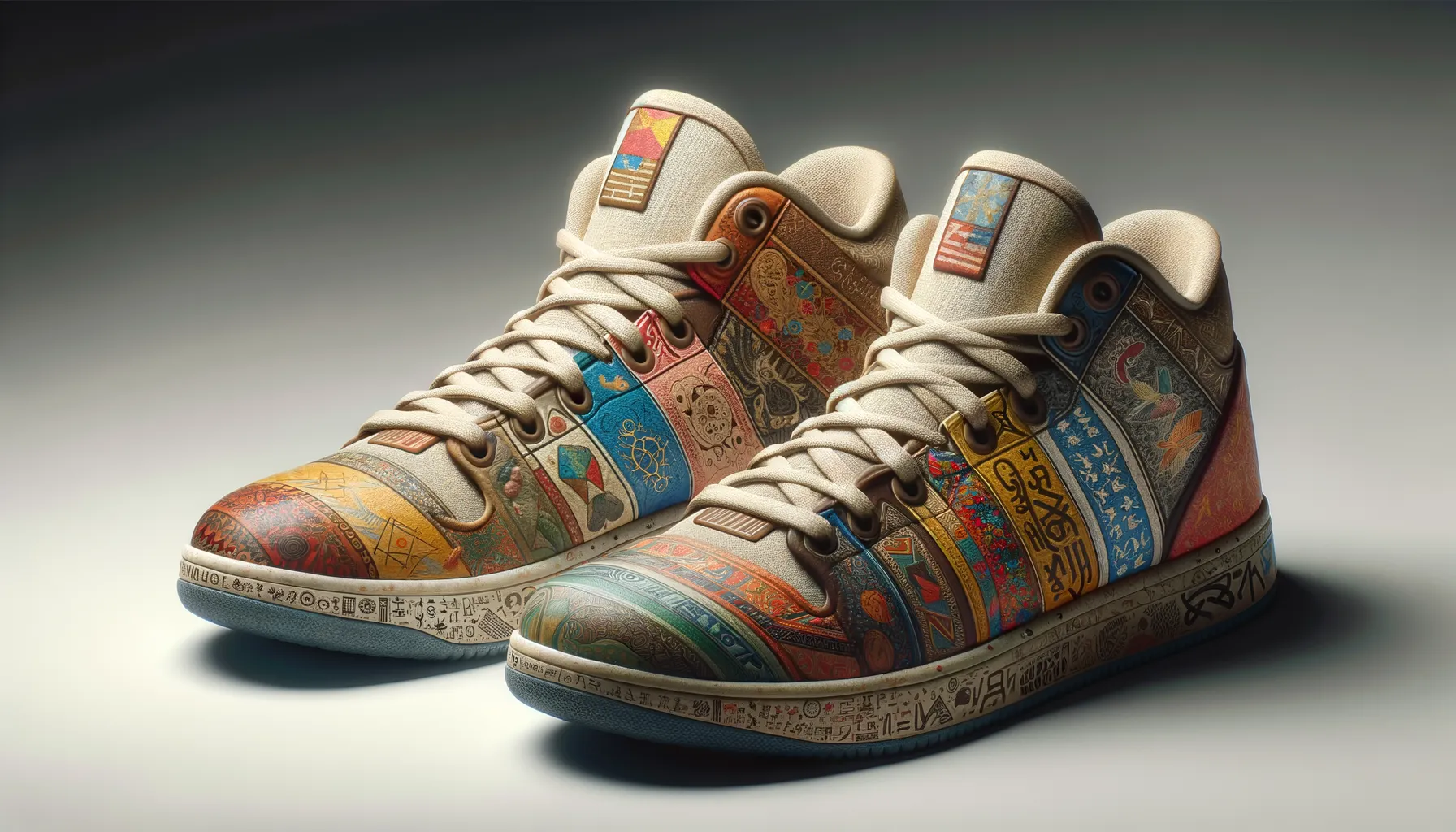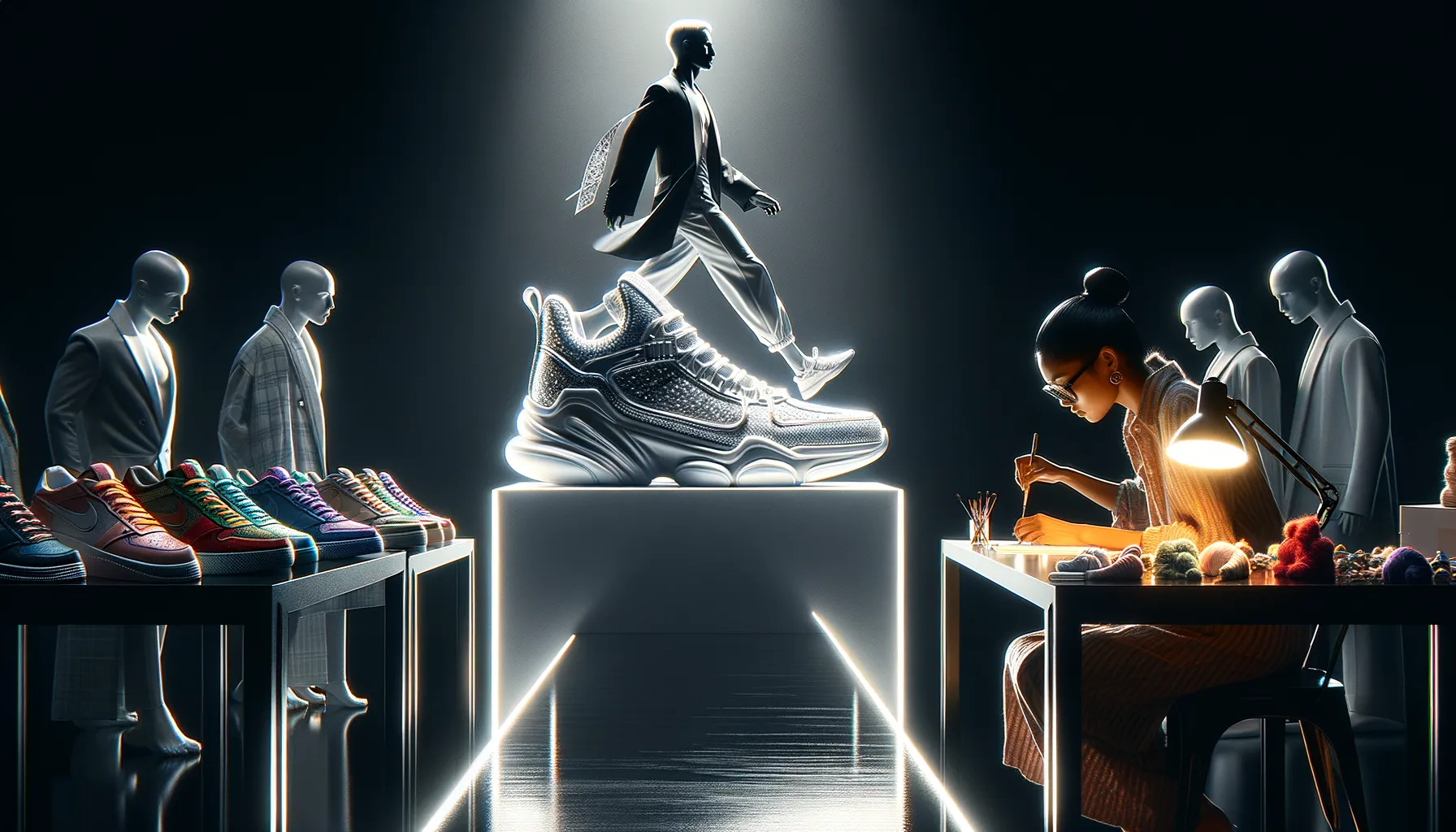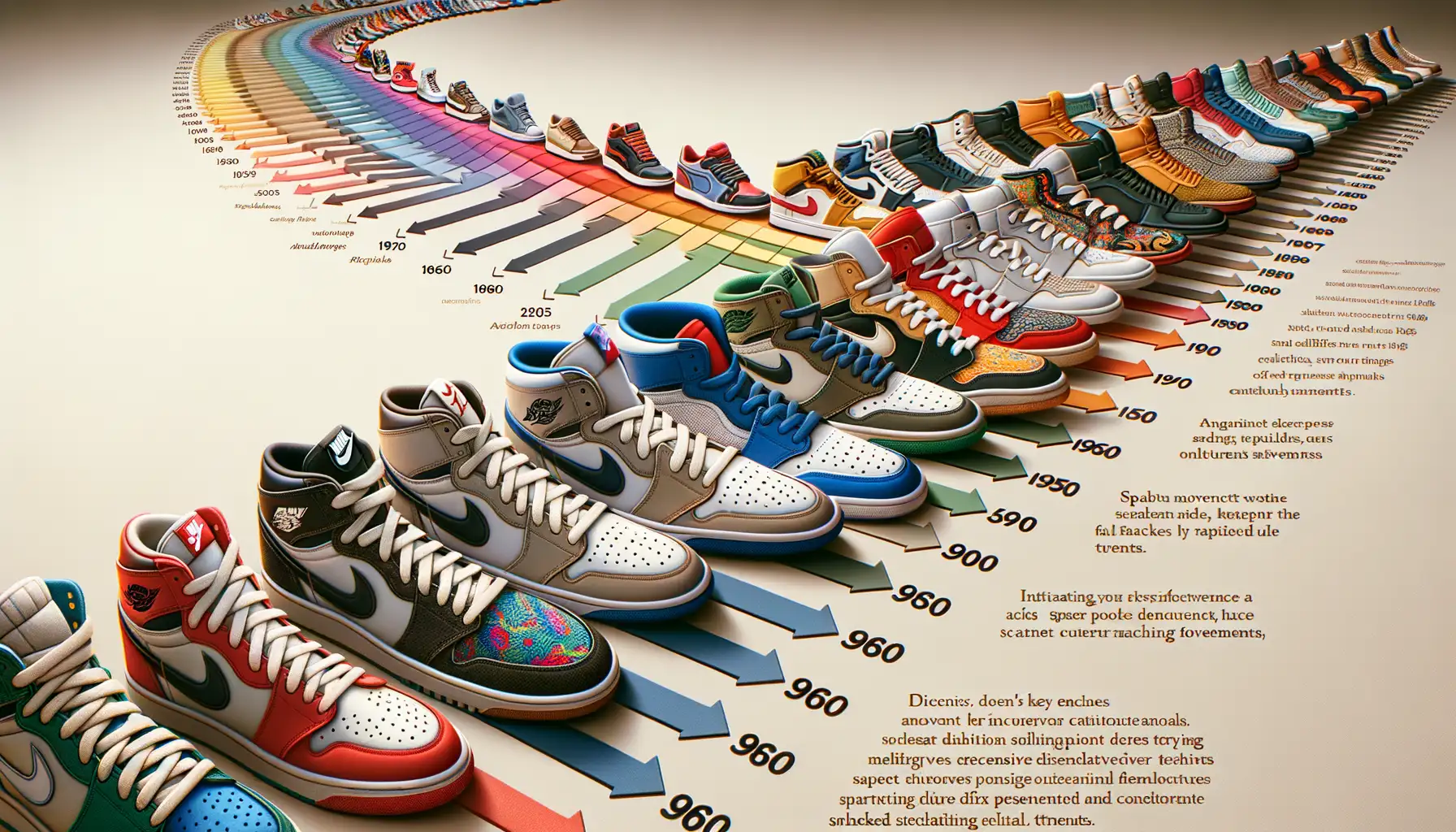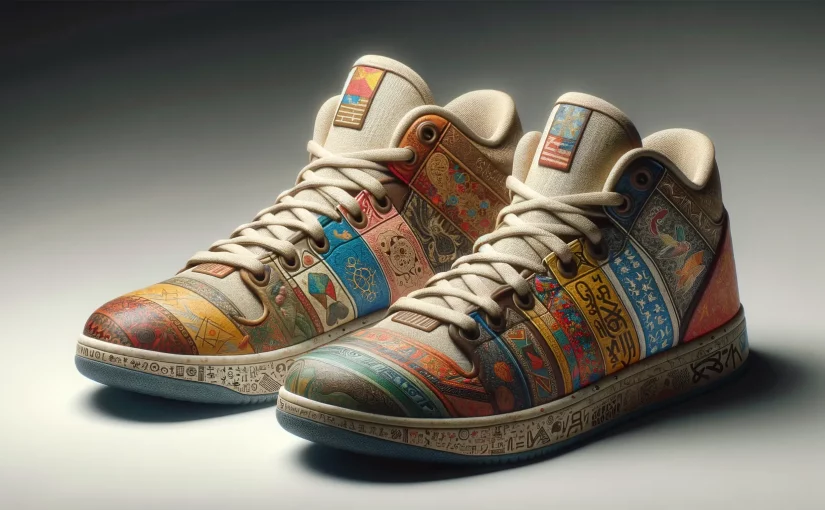The Evolution of Sneakers: From Sports to Streetwear
From the Tracks to the Sidewalks
Sneakers weren’t always about making a style statement. Picture this: the year is 1917, and the first mass-produced sneaker, the legendary Keds, rolls off the assembly line. Simple, durable, designed for athletes—not fashionistas. Fast-forward to the 1920s, and along comes Converse’s Chuck Taylor All-Stars, storming basketball courts across America. Their sole purpose? Pure performance.
But as decades passed, sneakers became so much more than just tools for sport. Think of the 1980s when Michael Jordan stepped onto the court in his Air Jordans, unknowingly sparking an entirely new cultural movement. Those shoes didn’t stay courtside—they leaped into skate parks, concert stages, and school hallways. Sneakers had officially crossed over.
- 1970s: Adidas Samba gave soccer players grip and city kids swagger.
- 1990s: Reebok Pump turned workout gear into a status symbol.
- Today: Yeezys are as at home at fashion week as they are on TikTok.
Sneakers now tell stories of innovation, rebellion, and individualism, blending sport, culture, and art in every step we take.
Sneakers as a Symbol of Identity and Expression

The Language of Sneakers: Every Pair Tells a Story
What’s on your feet right now? Sneakers aren’t just shoes—they’re reflections of who you are. From the bold, high-energy vibes of a neon-colored pair to the cool serenity of minimalist whites, sneakers have become an extension of our personalities. Each detail—whether it’s the curve of a swoosh, the texture of suede, or even the scuffed sole—speaks volumes about your unique story.
For some, rocking a pair of vintage Air Jordans is like wearing a badge of nostalgia, a nod to Michael Jordan’s legacy and the golden era of basketball. For others, it’s all about individuality—customized kicks with hand-painted designs or rare collabs that scream exclusivity. Sneakers give us a language without words, a way of saying, “This is who I am!” without ever opening your mouth.
- A skateboarding enthusiast might choose classic Vans, worn-in and perfect for grip tape.
- A streetwear aficionado could favor the chunky statement of the Balenciaga Triple S.
- And then there’s the eco-conscious trailblazer, lacing up sustainable pairs from brands like Allbirds.
Whatever your vibe, sneakers go beyond style—they’re a part of your identity, quietly marking your place in culture and conversation.
The Role of Sneakers in High Fashion

When Sneakers Walked the Runway
There was a time when sneakers had one job—supporting athletes as they shattered records. Fast forward to today, and these humble shoes are strutting down Parisian runways like they own the place. Yes, sneakers have gone couture, taking their place alongside silk gowns and tailored suits. The turning point? Probably when brands like Balenciaga and Gucci decided to rewrite the rulebook. Suddenly, we were wearing chunky-soled “dad sneakers” with blazers, and it *worked*.
But what made sneakers so irresistible to high fashion? Here’s what I think: it’s all about contrast. Pairing a sleek, minimalist outfit with a bold, oversized sneaker tells a story—a playful rebellion against stiff convention. Plus, a sneaker isn’t just a shoe—it’s an *attitude*.
- Collaborations like Dior x Air Jordan ignite cultural buzz and merge streetwear with luxury.
- Limited-edition drops create exclusivity, making sneakers feel more like art than footwear.
Who would’ve thought a once-functional design would become a status symbol, sparking bidding wars and racking up resale values higher than some cars? Now, that’s what I call a glow-up.
Sneakers as Sculptural Statements
In the world of high fashion, sneakers are no longer just accessories—they’re sculptures for your feet. Take the Maison Margiela Fusion Sneakers, for example. Sure, they look like they’ve been glued together in an art class gone rogue, but that’s precisely the charm. They’re messy, avant-garde, and scream, “You can’t ignore me.”
What about Virgil Abloh’s Off-White designs? These aren’t mere kicks; they’re declarations. From deconstructed styles to zip-tie tags, every detail feels intentional, daring you to question what “luxury” even means.
Honestly, the shift is thrilling. Sneakers now challenge traditional notions of beauty, injecting energy into high fashion that people can actually move—and dance—in.
Cultural Movements Driven by Sneaker Trends

Sneakers Sparking Social Revolutions
The power of sneaker culture is jaw-dropping—an unstoppable force that ripples through generations, communities, and movements. Think about it: when Michael Jordan laced up his red-and-black Air Jordans in the ’80s, he wasn’t just making a fashion statement. He was smashing rules, breaking barriers, and inspiring millions. That bold choice? It helped ignite the streetwear revolution we’re still riding today.
Sneakers have been at the epicenter of cultural shifts in ways you might not expect. In the ’90s, hip-hop artists like Run-D.M.C. turned the Adidas Superstar into a badge of rebellion and style. Remember their anthem, “My Adidas”? They weren’t just rapping about shoes—they were claiming space, owning identity, and giving marginalized stories a global stage.
- The ’80s punk scene turned Doc Martens into a gritty symbol of counterculture.
- Skateboarders adopted Vans, transforming them into a signifier of adrenaline-fueled freedom.
Fast forward to today, where movements like #StopAsianHate or Black Lives Matter drive collaborations with Nike and other brands. Sneakers are no longer just accessories—they’re wearable protests, storytelling platforms, and tools for radical self-expression.
Sustainability and the Future of Sneakers

Why Sustainability Matters in Sneaker Culture
The sneaker world is waking up—and it’s not just about flashy designs anymore. As much as we all love the thrill of unboxing a new pair, have you ever stopped to wonder what happens to those worn-out kicks collecting dust in your closet? Here’s the truth: the planet pays the price for our obsession. From plastic-heavy components to manufacturing processes that leave a hefty carbon footprint, traditional sneakers aren’t exactly eco-friendly.
But here’s the good news: the future of sneakers is getting greener. Brands like Nike, Adidas, and even independent labels are stepping up their game. They’re using recycled materials (say hello to ocean plastics!) and experimenting with biodegradable fabrics. Have you heard about sneakers made entirely from mushrooms or pineapple fibers? Yes, you read that right—your next iconic pair could literally grow from the earth!
- Recyclable soles: Some brands now take back old sneakers and turn them into playground surfaces or even new shoes.
- Waterless dyeing technology: A breakthrough saving millions of gallons of water per year.
The Changing Mindset of Sneaker Lovers
Sneakers aren’t just style statements anymore—they’re moral choices. Today’s sneakerheads want more than cool designs; they want their shoes to mean something. Owning a pair of sustainable sneakers feels different. It’s knowing you’re walking lighter on the planet.
Think of sneakers like a mirror: they reflect us and our values. When companies prioritize eco-consciousness, it sends ripples through the industry. We, the consumers, notice. And let’s admit it—rocking a pair of sneakers that *looks* good and *does* good? That’s next-level swagger.

